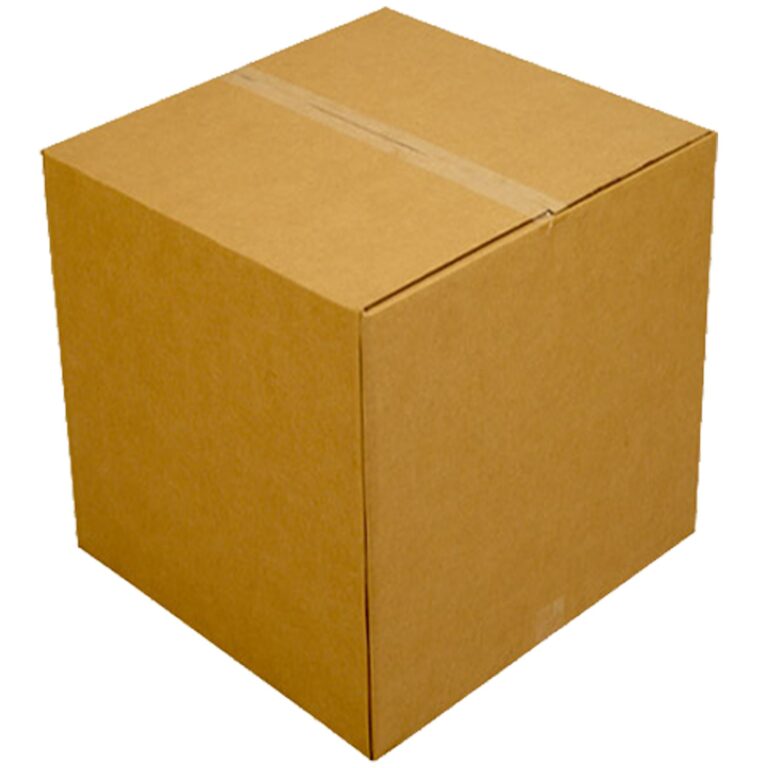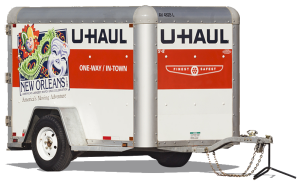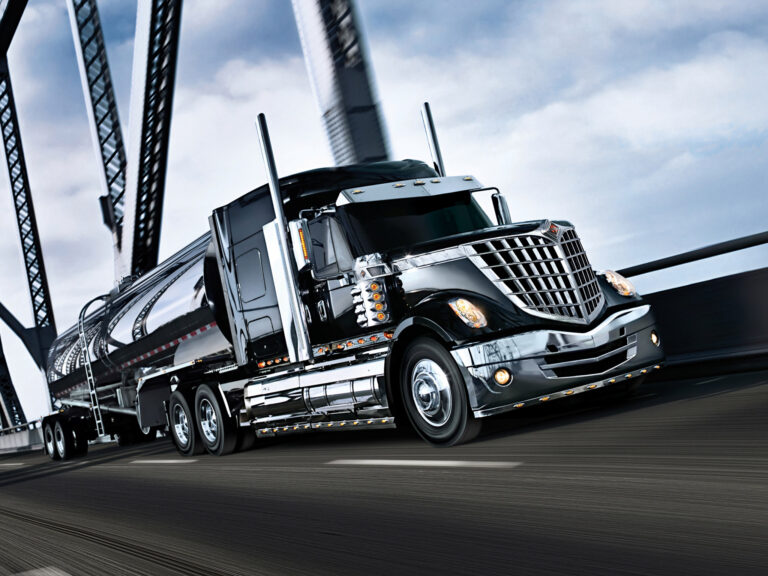What’s The Typical Size Opening Of A Box Truck? A Comprehensive Guide
What’s The Typical Size Opening Of A Box Truck? A Comprehensive Guide cars.truckstrend.com
When planning a move, transporting goods, or handling commercial deliveries, selecting the right box truck is paramount. While the overall length of the truck (e.g., 10-foot, 16-foot, 26-foot) is often the primary consideration, a frequently overlooked yet critically important dimension is the size of the rear door opening. This opening dictates what you can actually load and unload, often more so than the truck’s internal dimensions. Understanding the typical size opening of a box truck is crucial for ensuring a smooth, efficient, and damage-free transport experience. This comprehensive guide will delve into the specifics of box truck door openings, exploring their variations, influencing factors, and practical implications.
Understanding Box Truck Dimensions: More Than Just Length
What’s The Typical Size Opening Of A Box Truck? A Comprehensive Guide
A "foot box truck" typically refers to the length of its cargo area, which can range from compact 10-foot models to massive 26-foot vehicles. However, the usable space isn’t just about the floor length and interior height; it’s heavily constrained by the rear door opening. This opening is your gateway to the cargo bay, and its dimensions (width and height) are the true bottlenecks for loading large or bulky items.
There are two primary types of rear doors commonly found on box trucks, each with distinct characteristics regarding their opening dimensions:
- Roll-Up Doors (Overhead Doors): These are the most common type on rental box trucks and many commercial vehicles. They operate like a garage door, rolling up and stowing away at the top of the cargo area.
- Swing-Out Doors (Barn Doors): Less common on typical rentals, but frequently seen on larger commercial trucks or specialized units. These doors open outwards, similar to conventional double doors.
Each door type offers different advantages and, more importantly, different effective opening sizes relative to the truck’s interior.
The Typical Dimensions of Roll-Up Door Openings
Roll-up doors, while convenient for their compact operation, inherently reduce the usable height of the opening. This is because the door mechanism and tracks occupy space at the top of the door frame. This reduction is a critical factor to consider, especially when loading tall items.
Here’s a breakdown of typical roll-up door opening dimensions for common box truck sizes:
-
10-12 Foot Box Trucks (e.g., U-Haul 10′, Penske 12′): These are the smallest rental trucks, ideal for studio apartments or small local deliveries.
- Typical Opening Width: Approximately 6 ft 6 in to 7 ft (78-84 inches)
- Typical Opening Height: Approximately 6 ft 6 in to 6 ft 10 in (78-82 inches)
- Note: While the interior might be 7 ft high, the roll-up door often reduces the usable opening height by 4-6 inches.
-
14-17 Foot Box Trucks (e.g., Budget 16′, Penske 16′): A popular choice for 1-2 bedroom apartments or medium-sized loads.
- Typical Opening Width: Approximately 7 ft to 7 ft 6 in (84-90 inches)
- Typical Opening Height: Approximately 6 ft 10 in to 7 ft (82-84 inches)
- Note: The width starts to accommodate larger furniture, but the height restriction from the roll-up mechanism remains a key consideration.
-
20-22 Foot Box Trucks (e.g., U-Haul 20′, Penske 22′): Suitable for 3-4 bedroom homes or larger commercial deliveries.
- Typical Opening Width: Approximately 8 ft to 8 ft 6 in (96-102 inches)
- Typical Opening Height: Approximately 7 ft to 7 ft 6 in (84-90 inches)
- Note: These trucks offer significantly more width, making it easier to load wider items or multiple items side-by-side. The height clearance also improves slightly.
-
24-26 Foot Box Trucks (e.g., U-Haul 26′, Penske 26′, Ryder 26′): The largest non-CDL required rental trucks, designed for large homes or significant commercial freight.
- Typical Opening Width: Approximately 8 ft 6 in to 8 ft 10 in (102-106 inches)
- Typical Opening Height: Approximately 7 ft 6 in to 8 ft (90-96 inches)
- Note: These trucks offer the maximum possible clearance for standard box truck rentals, often allowing for easier loading of appliances like refrigerators or even some palletized goods.
The Typical Dimensions of Swing-Out (Barn) Door Openings
Swing-out doors provide the most unobstructed access to the truck’s cargo area. Since they pivot outwards, they don’t have the overhead mechanism that reduces vertical clearance. This means the usable height of the opening is very close to the interior height of the truck.
- Typical Opening Width: Generally comparable to roll-up door widths for similar truck sizes, ranging from 7 ft to 8 ft 10 in.
- Typical Opening Height: Crucially, the height is often closer to the full interior height of the truck, typically 7 ft 6 in to 8 ft 6 in (90-102 inches) for larger trucks.
- Consideration: While offering superior access, swing-out doors require ample clear space behind the truck for the doors to fully open. This can be a challenge in tight driveways or loading docks. They are less common on typical self-move rental fleets and more prevalent on dedicated commercial or fleet vehicles.
Factors Influencing Box Truck Opening Size
Beyond the general truck size and door type, several other factors can influence the actual opening dimensions:
- Manufacturer and Model: Different truck manufacturers (e.g., Ford, GMC, Isuzu, Hino, Freightliner) and specific models will have slight variations in their design and dimensions.
- Year of Manufacture: Older models might have slightly different specifications than newer ones.
- Customization or Specialty Builds: Some box trucks are custom-built for specific purposes (e.g., refrigerated units, moving pianos, specialized equipment transport). These may feature unique door configurations or larger/smaller openings.
- Lift Gate Integration: If a truck is equipped with a lift gate, it might influence the type of door used (often roll-up) and its effective clearance, though the lift gate itself aids in loading.
Why the Opening Size Matters: Practical Applications
The seemingly minor differences in door opening dimensions can have significant practical implications:
- Loading/Unloading Efficiency: A wider and taller opening allows for easier maneuvering of bulky items, reducing the effort and time required for loading and unloading. This is especially true for items like sofas, refrigerators, or large entertainment centers.
- Item Compatibility: The most critical factor. Will your largest item (e.g., a tall dresser, a king-size mattress, a large appliance) actually fit through the door? Remember to account for the angle you might need to tilt it.
- Equipment Use: For commercial applications, the opening width and height are vital for using equipment like pallet jacks or forklifts. If a pallet needs to be loaded, both the width and the effective height of the opening must accommodate the pallet dimensions (typically 48×40 inches) plus the height of the goods.
- Safety: Struggling to fit items through a small opening increases the risk of damaging the item, the truck, or injuring movers.
- Cost Efficiency: Choosing a truck with an adequately sized opening prevents the need for multiple trips, or worse, having to rent a larger, more expensive truck mid-move because an item doesn’t fit.
Tips for Measuring and Selecting the Right Truck
To avoid headaches and ensure a smooth moving or transport process, follow these practical steps:
- Measure Your Largest Items: Do not guess. Use a tape measure to get the precise height, width, and depth of your bulkiest and tallest items. For items like sofas, measure not just the overall dimensions but also any rigid points that might catch (e.g., arms, legs).
- Account for Door Clearance (Especially Roll-Up): Always subtract 4-6 inches from the listed interior height of a truck with a roll-up door to estimate the actual usable door opening height.
- Consider Maneuverability: Think about how you’ll get items into the opening. Will you need to tilt a tall item? Ensure there’s enough interior space to maneuver it once past the door.
- Confirm with the Rental Company: When booking, specifically ask for the exact rear door opening dimensions for the particular truck size you’re considering. Don’t rely solely on online diagrams, as these can be generic.
- Factor in Ramps/Lift Gates: If using a ramp, consider its angle. While it doesn’t change the door opening, it affects how easily items can be pushed or pulled through the opening. Lift gates are a huge help but don’t change the static door dimensions.
Challenges and Solutions Related to Opening Size
Even with careful planning, challenges can arise. Here’s how to address common issues related to box truck opening size:
-
Challenge: Your largest item (e.g., a refrigerator, large wardrobe) is just slightly too tall or wide for the door opening.
- Solution:
- Disassemble: Can any parts of the item be removed (e.g., refrigerator doors, wardrobe top pieces)?
- Tilt/Angle: If it’s a height issue, can you tilt the item? Ensure enough interior height and width to perform the tilt.
- Larger Truck: If possible, upgrade to the next size truck with a larger opening.
- Specialized Movers: For extremely large or delicate items that won’t fit, consider professional moving services that specialize in such items.
- Solution:
-
Challenge: The roll-up door mechanism significantly limits the usable height, making it difficult to load tall items.
- Solution:
- Look for Swing-Out Doors: If your rental company offers trucks with swing-out doors for your desired size, opt for those, provided you have space to open them.
- Tilt and Maneuver: Plan your loading strategy to tilt items.
- Taller Box Truck: Rent a larger truck, as taller trucks generally have higher door clearances even with roll-up doors.
- Solution:
-
Challenge: You have limited space behind the truck, making it difficult to open swing-out doors fully.
- Solution:
- Strategic Parking: Park the truck in a way that maximizes the space behind it.
- Opt for Roll-Up Doors: If space is a major concern, a truck with a roll-up door might be a more practical choice, even with its height limitations.
- Solution:
Estimated Daily Rental Costs for Box Trucks (Varying by Opening Size)
The "price" of a box truck opening isn’t a standalone cost. Instead, it’s intrinsically linked to the overall size and type of the box truck you rent or purchase. Below is a table of estimated daily rental costs for common box truck sizes, which directly correlates with the typical opening dimensions discussed. These are general estimates and can fluctuate significantly.
| Truck Size (Length) | Typical Rear Door Opening (Width x Height) | Door Type | Estimated Daily Rental Cost Range (USD) | Notes |
|---|---|---|---|---|
| 10-12 ft | 6’6" – 7′ W x 6’6" – 6’10" H | Roll-up | $19.99 – $39.99 + mileage | Ideal for studio/1-bedroom apartment moves, small local deliveries. Limited vertical clearance for tall items. |
| 14-17 ft | 7′ – 7’6" W x 6’10" – 7′ H | Roll-up | $29.99 – $59.99 + mileage | Good for 1-2 bedroom apartments, medium loads. Better width, but height still needs careful consideration. |
| 20-22 ft | 8′ – 8’6" W x 7′ – 7’6" H | Roll-up | $39.99 – $79.99 + mileage | Suitable for 3-4 bedroom homes, larger deliveries. Significant increase in width and slightly more height, making loading easier for most household items. |
| 24-26 ft | 8’6" – 8’10" W x 7’6" – 8′ H | Roll-up | $49.99 – $99.99 + mileage | Largest common rental size. Ideal for large homes, commercial freight. Offers maximum standard clearance for width and height. |
| Commercial/Specialty | Varies widely (e.g., full height, wider) | Swing-out/Custom | Higher, often contract-based | Typically leased or purchased for specific business needs. Offers maximum versatility in opening dimensions and can be custom-built to specific requirements. Not usually available for short-term self-move rentals. |
Disclaimer: These are estimated daily rental costs for major truck rental companies (e.g., U-Haul, Budget, Penske, Ryder) in the United States. Prices can vary significantly based on location, time of year, demand, rental duration, insurance options, mileage fees, and fuel costs. Custom door modifications or purchasing a truck with specific door types would involve significantly higher, non-rental-related costs.
Frequently Asked Questions (FAQ)
Q1: Is the door opening size the same as the interior height of the truck?
A1: No, not typically. For box trucks with roll-up doors (the most common type), the door mechanism and tracks at the top of the frame reduce the usable height of the opening. You generally lose 4-6 inches of vertical clearance compared to the truck’s internal height. Swing-out doors offer an opening height closer to the interior height.
Q2: What’s better, roll-up or swing-out doors?
A2: It depends on your specific needs.
- Roll-up doors are great for tight spaces as they don’t require external clearance to open. However, they limit vertical access.
- Swing-out doors provide maximum unobstructed access (both width and height) but require significant space behind the truck to open fully. They are often preferred for forklift loading.
Q3: Can I get a box truck with a wider or taller opening than standard?
A3: For standard short-term rentals, you are usually limited to the typical dimensions offered by the rental fleet. If you require highly specific or larger-than-standard openings, you would likely need to look into commercial truck leasing or purchasing a specialized truck that can be customized.
Q4: How do I measure my items correctly for a truck?
A4: Measure the height, width, and depth of your largest and most awkward items. For furniture, consider diagonal measurements if an item needs to be tilted to fit. Always measure from the widest/tallest/deepest points. When in doubt, add a couple of inches for safe clearance.
Q5: Do all truck rental companies provide opening dimensions?
A5: Most major truck rental companies (U-Haul, Budget, Penske, Ryder) provide general interior dimensions on their websites. However, for precise door opening dimensions, especially the critical vertical clearance for roll-up doors, it’s highly recommended to call and speak with a representative directly about the specific truck model you plan to rent.
Conclusion
Understanding "What’s The Typical Size Opening Of A Box Truck" goes far beyond simply knowing the truck’s overall length. The dimensions of the rear door opening, particularly its usable height and width, are the true determinants of what you can successfully load and transport. By carefully considering the type of door (roll-up vs. swing-out), understanding the common dimension ranges for different truck sizes, and meticulously measuring your items, you can select the perfect truck for your needs. This foresight will save you time, effort, potential damage, and ultimately, ensure a stress-free moving or delivery experience. Always plan ahead, measure twice, and when in doubt, communicate directly with your truck rental provider to confirm the critical opening dimensions.






